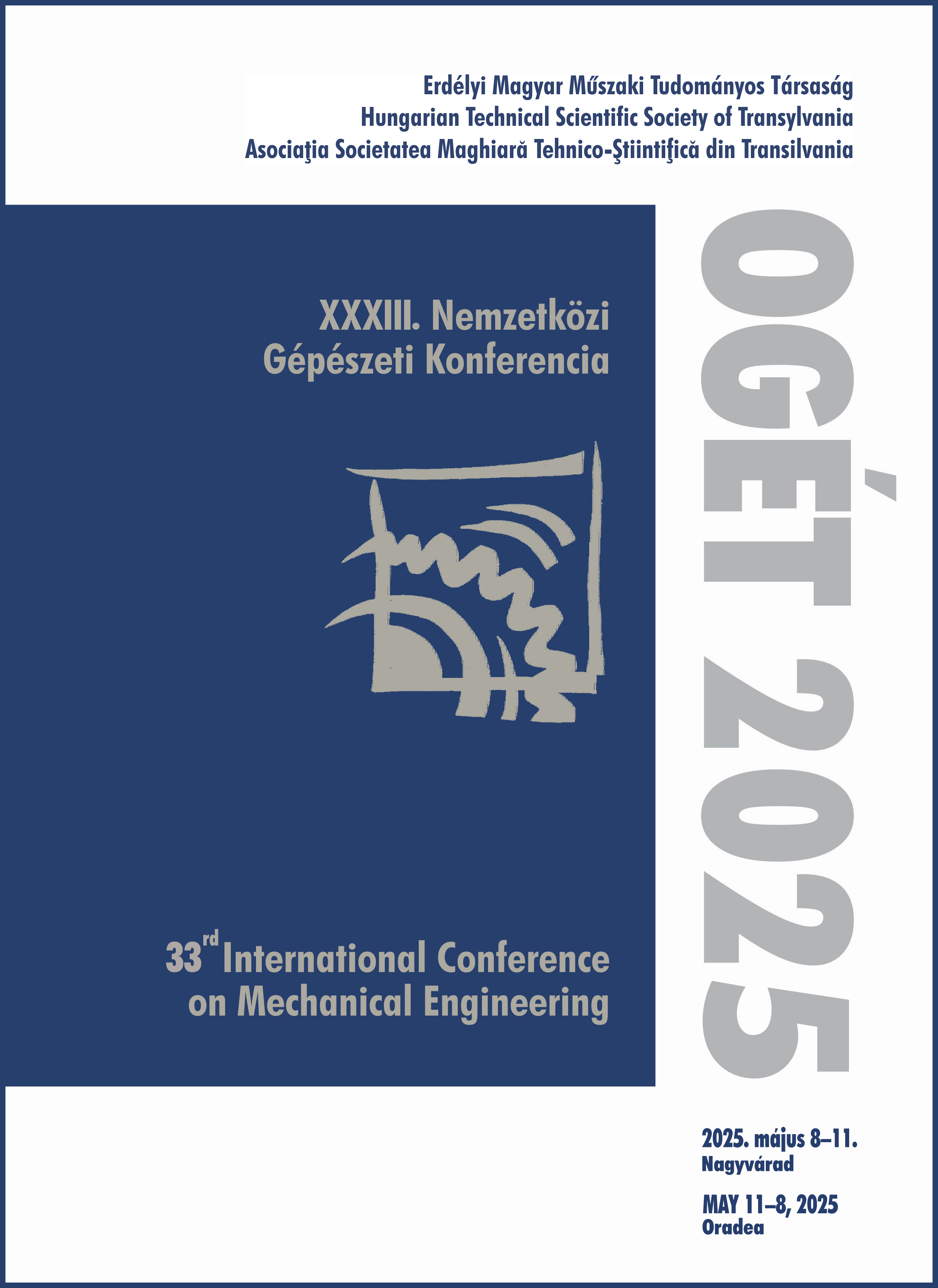Szerkezeti stabilitás optimalizálása in situ térhálósítással vákuumfóliás szendvicsszerkezetű scaffoldok esetén
Optimization of structural stability of vacuum bagged sandwich-like scaffolds by in situ crosslinking
Keywords:
vacuum bagging, electrospinning, nanofibrous mesh, sandwich-like structure, structural integrity, /, vákuumfóliás módszer, elektrosztatikus szálképzés, nanoszálas szálháló, szendvics szerkezet, szerkezeti integritásAbstract
The aim of the research is to produce and characterize a sandwich-like scaffold for bone regeneration. The cover layers of the scaffold are polyvinyl alcohol (PVA) fibrous meshes produced by electrospinning, and the core material is a chitosan composite containing ꞵ-tricalcium phosphate (ꞵ-TCP) produced by lyophilization. The in-situ crosslinking of the nanofibrous PVA and the formation of the sandwich-like structure were performed using the vacuum bagging. Our results contribute to the development of new generations, biocompatible materials that can provide optimal support for bone regeneration processes.
Kivonat
A kutatás célja szendvicsszerkezetű scaffold vákuumfóliás módszerrel történő előállítása és karakterizálása. A scaffold külső rétegei elektrosztatikus szálképzéssel előállított polivinil-alkohol (PVA) szálhálók, a scaffold mag anyaga liofilizálással előállított ꞵ-trikalcium-foszfát (ꞵ-TCP) tartalmú kitozán kompozit. A nanoszálas szerkezetű PVA in situ térhálósítása és a szendvicsszerkezet kialakítása vákuumfóliás eljárással történt. Eredményeink hozzájárulhatnak az új generációs, biokompatibilis anyagok fejlesztéséhez, amelyek optimális támogatást nyújthatnak a csontregenerációs folyamatokhoz.
References
Teixeira M.A., Amorim M.T.P. and Felgueiras H.P. Poli(Vinyl Alcohol)-Based Nanofibrous Electrospun Scaffolds for Tissue Engineering Applications. Polymers, 2020, 12(1),7, 1-33.
Dai X., Nie W., Shen H., Machens H., et al. Electrospinning based biomaterials for biomimetic fabrication, bioactive protein delivery and wound regenerative repair. Regenerative Biomaterials, 2024, 12, 139.
Das A., Shetty S., Chethan K.N., Shetty R. and Sampath S.S. Electrospun nanofibers: transformative innovations in biomedical applications and Future prospects in healthcare advancement. Cogent Engineering, 2024, 11(1).
Demir D., Bolgen N. and Vaseashta A. Electrospun Nanofibers for Biomedical, Sensing, and Energy Harvesting Functions. Polymers, 2023, 15(21), 4253.
Drevet R., Fauré J. and Benhayoune H. Bioactive Calcium Phosphate Coatings for Bone Implant Applications: A Rewiew. Coatings, 2023, 13(6), 1091
Mawazi S.M., Kumar M., Ahmad N. and Mahmood A. Recent Applications of Chitosan and its Derivatives in Antibacterial, Anticancer, Wound Healing, and Tissue Engineering Fields. Polymers, 2024, 16(10), 1351.
Reves B.T., Bumgardner J.D., Cole J.A., Yang Y. and Haggard W.O. Liophilization to improve drug delivery for chitosan-calcium phosphate bone scaffold construct: A preliminary investigation. Journal of Biomedical Materials Research Part B, 2009, 90(1), 1-10.
Yahia S., Khalil I.A. and El-Sherbiny I.M. Sandwich-Like Nanofibrous Scaffold for Bone Tissue Regeneration. ACS Applied Materials and Interfaces, 2019, 11, 32, 28610-28620.
Tavares S.S.L. Optimisation of low pressure processing for honeycomb sandwich structure.
http://doi.org/10.5075/EPFL-THESIS-4497 (Utolsó letöltés: 2025. 03 05.)
Boda R., Lázár I., Keczánné Ü.A. et al. Tricalcium Phosphate-Modified Aerogel Containing PVA/Chitosan Hybrid Nanospun Scaffold for Bone Regeneration. Journal of Molecular Science, 2023, 24(8), 1-23.


